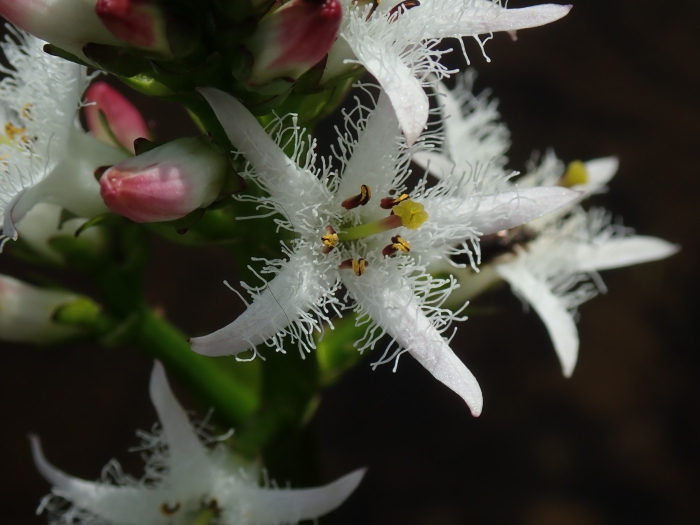Buckbean
(Menyanthes trifoliata)
Buckbean (Menyanthes trifoliata)
/
/

Randal
Public Domain









































Estimated Native Range
Summary
Buckbean is valued for its ornamental flowers and its ability to thrive in wet conditions, making it an excellent choice for water gardens, bog gardens, and the margins of ponds. It is also used in traditional medicine and has a history of being used as a bitter flavoring agent in liqueurs like schnapps. In cultivation, it requires full sun to part shade and consistently moist to wet soil with medium to slow drainage. While it is generally low-maintenance, it can spread aggressively in ideal conditions. Gardeners should be aware of its potential to become invasive outside its native range.CC BY-SA 4.0
Plant Description
- Plant Type: Herb
- Height: 0.3-1 feet
- Width: 1-2 feet
- Growth Rate: Moderate
- Flower Color: White
- Flowering Season: Spring
- Leaf Retention: Deciduous
Growth Requirements
- Sun: Full Sun, Part Shade
- Water: High
- Drainage: Medium, Slow
Common Uses
Edible*Disclaimer: Easyscape's listed plant edibility is for informational use. Always verify the safety and proper identification of any plant before consumption., Low Maintenance, Showy Flowers, Water Garden
Natural Habitat
Peat bogs, marshes, and wetlands across the Northern Hemisphere
Other Names
Common Names: Bog Bean , Buck-Bean , Common Bogbean , Bog Buckbean , Bogbean , Bog-Myrtle , Marsh Trefoil , Marsh-Clover , Water Trefoil , Bukkeblad
Scientific Names: Menyanthes trifoliata , Menyanthes palustris , Menyanthes trifolium , Menyanthes trifoliata subsp. verna , Menyanthes trifoliata var. minor , Menyanthes americana , Menyanthes latifolia , Menyanthes paradoxa , Menyanthes tridentata , Menyanthes trifoliata f. brevistyla , Menyanthes verna
GBIF Accepted Name: Menyanthes trifoliata L.